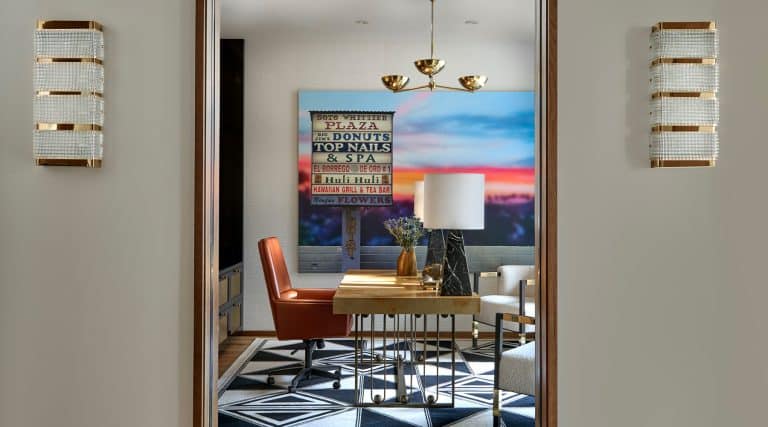May 18, 2025Artist Ray Smith‘s studio and loft, sited near the head of the Gowanus Canal, in Brooklyn, has had many lives. Built in the 1800s, the structure was once a foundry producing engine heads for large electric turbines. In another incarnation, it was a blacksmith’s shop, where the horses of Brooklyn were shod. (The canal, perhaps no coincidence, was also once a dumping ground for dead horses.)
For the past 25 years, the building has been Smith’s base of operations — for both his own studio practice and a rotation of family, friends and assistants collaborating in the space. Since COVID hit, it has also been home to Smith and his wife, Maricruz.
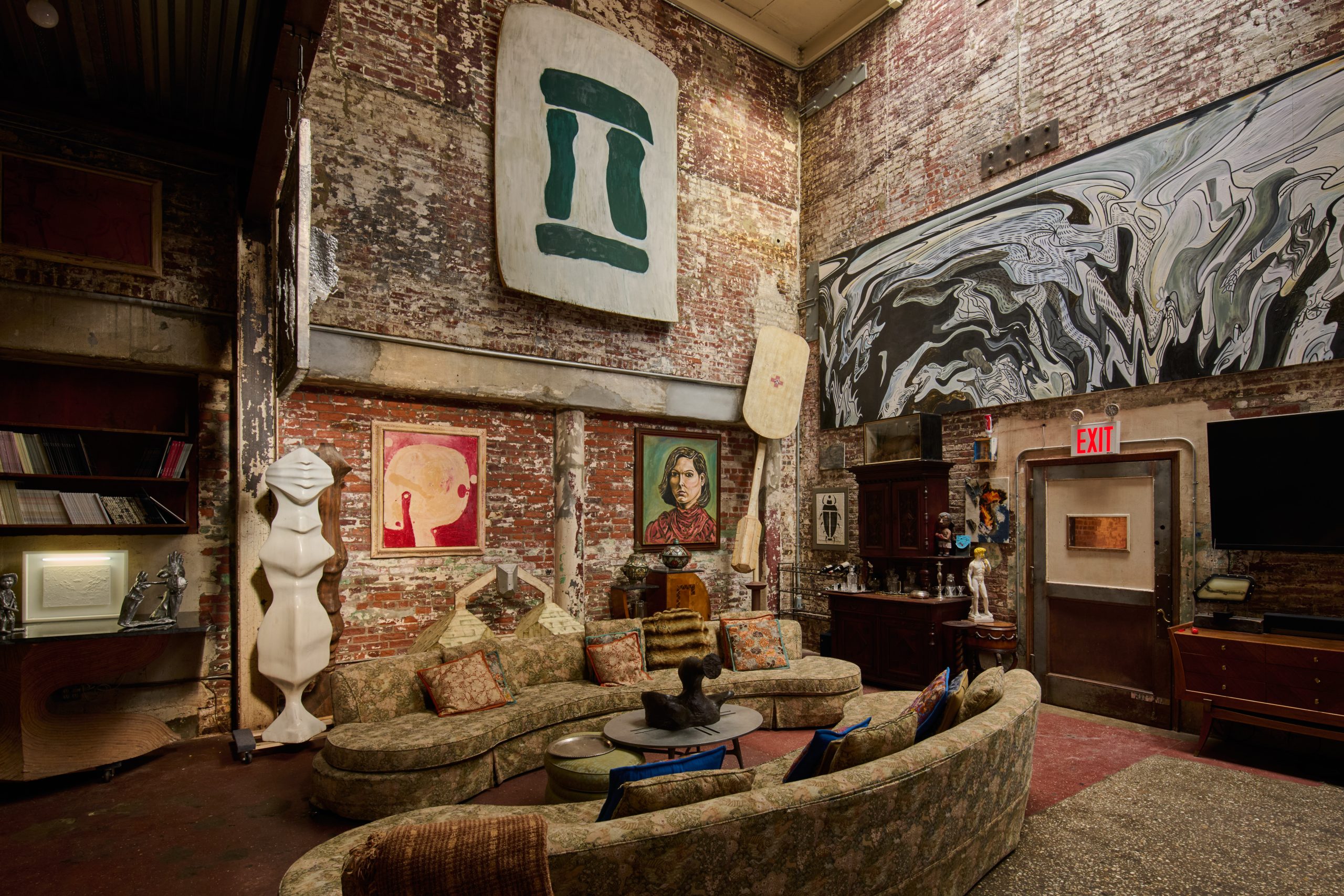
Adapting the space to his needs over the years has inspired “a bit of exploratory anthropology,” says the South Texas native, who was raised in central Mexico. Smith is known for figurative canvases and totemic sculptures — some of them recently on view in a solo show at the Ethan Cohen Gallery in New York’s Chelsea — that playfully cannibalize sources from Pablo Picasso to Surrealism to the Mexican muralists. His studio, he says, “is like a mystery house. It’s been a really pleasant place to work and live that also has all this history about the canal.”

For an industrial relic, the place is surprisingly hospitable. The smaller of the two primary spaces, with magnificently weathered brick walls rising 25 feet and lit by a strip of skylights, has long been the socializing area. Two large kidney-shaped sofas once owned by Doris Duke ground one end of the room, balanced by a big communal dining table at the other. The latter was hand-made by the Brazilian artist Saint Clair Cemin, a friend of Smith’s who shared a previous studio with him in Brooklyn’s Red Hook district.
A dense arrangement of artworks rings the walls like a giant cabinet of curiosities. A monumental horizontal canvas by Smith — a wild distortion of Picasso’s Guernica, rendered as if it were being sucked down a drain — is flanked by smaller pieces by artist friends including Guillermo Kuitca, Donald Baechler, Marcel Dzama and Bosco Sodi, all intermixed with taxidermied animals in cases.
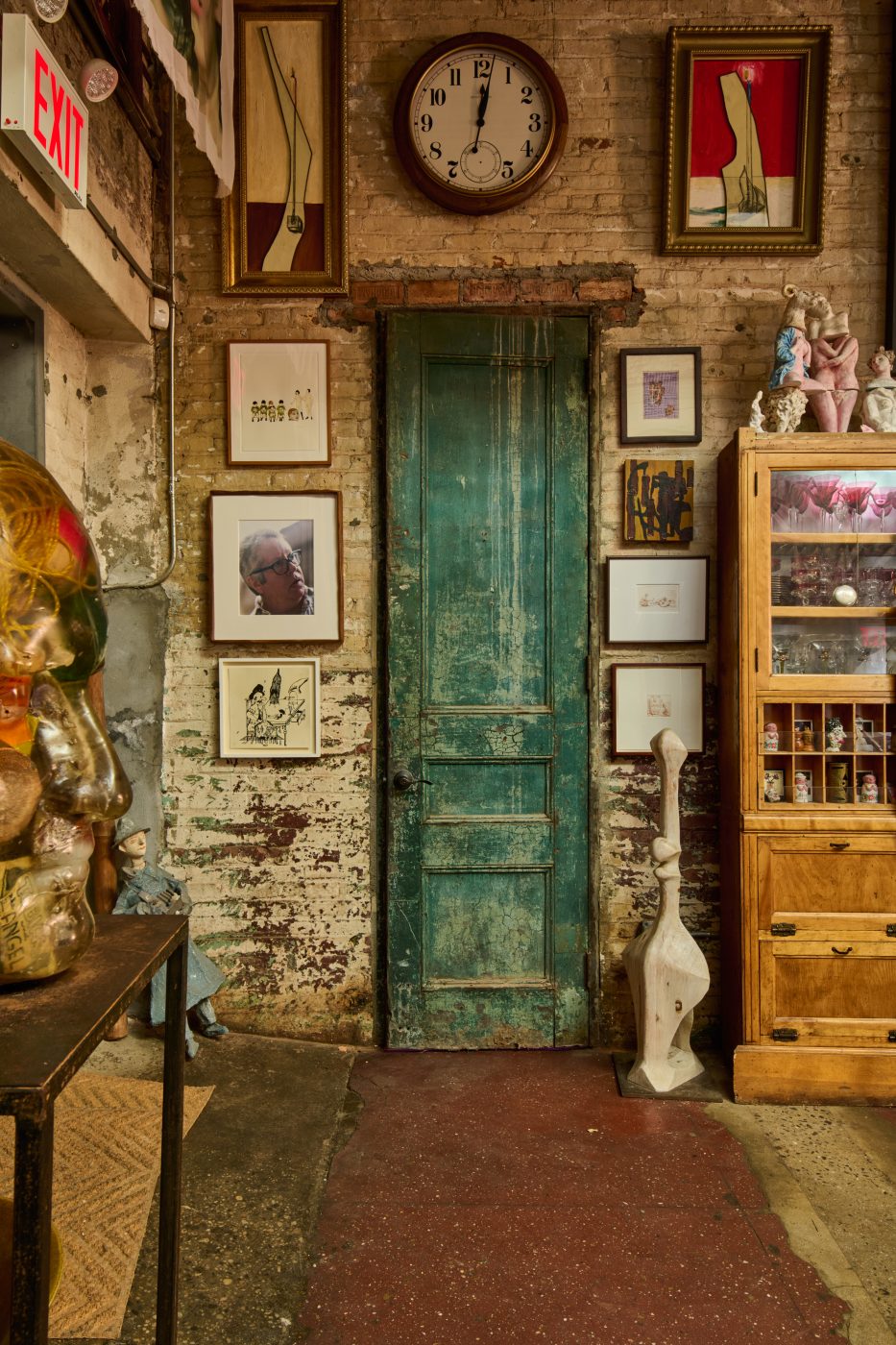
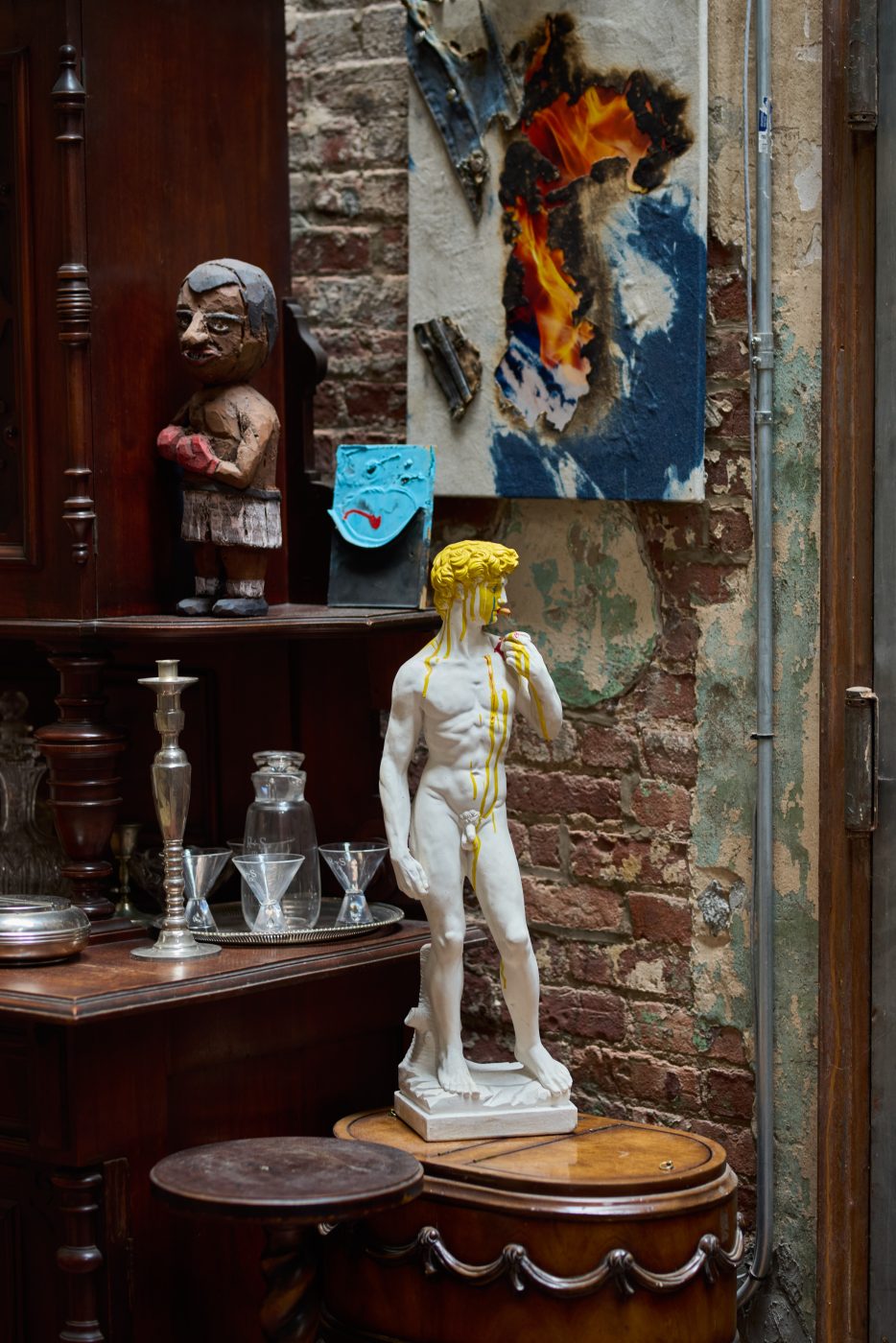
Paintings by Nicole Eisenman, Manuel Ocampo and Ron Gorchov anchor other walls. “Ron moved into our studio for the last portion of his life, and we worked with him to produce his curved stretcher bars,” Smith says. “It was a really intense collaboration, because he was very particular about the shapes — they’re sculptures.”
Through a door marked with a red exit sign, Smith’s cavernous studio unfolds, with clerestory windows and some of his mirrored mosaic sculptures dangling from the 36-foot-high ceiling like disco balls. Airplane-hangar heaters, jerry-rigged across the rafters, were put in by Julian Schnabel when he used the space temporarily as his studio. Protruding from an upper corner of the studio is a small elevated room with a coffin-shaped opening punched through one of its brick walls.

“That box up there was where the original foundry stored the sand they used,” says Smith, who revels in the discovery of such hidden rooms. The space has been co-opted by one of his daughters: “She accesses the hole with the scissor lift, and none of us are allowed to go up there.” (Both of his daughters and his son, all adults now, are artists who have always freely availed themselves of the studio.)
The arena-like workspace has hosted many events and exhibitions over the years, including shows by the Bruce High Quality Foundation, an arts collective formed in 2004. “Some of the Bruces were assistants of mine originally,” says Smith, who nurtured the iconoclastic spirit of the group, many of whose members came out of Cooper Union and work anonymously.

During Hurricane Sandy, in 2012, the studio took on six feet of water. “The entire thing turned into a gigantic swimming pool,” says Smith. He was able to salvage a lot of his water-logged work through the conservation and storage services of his friends at Mana Contemporary, a Jersey City arts center, who sent a convoy of trucks to the rescue. In the aftermath of the storm, as he was working on weatherizing the building, Smith took advantage of its soaring ceilings to put in two mezzanines above the flood zone that he could use for storage.
“We were always horsing around with the building because we had architects and sculptors working in here,” says Smith. “It was kind of seat-of-your pants architecture.”

He remembers lively group discussions about where a staircase to the mezzanines might go. The excavation of another bricked-in area, completed with the help of his assistants, revealed a surprise 12-by-12-foot chimney space running up through the building. An architect friend, Juan Alurralde, designed a dramatic network of metal stairs snaking up the narrow chimney column and connecting the mezzanines at different heights via a set of floating stairs and a catwalk, inspired by the labyrinthine architectural fantasies of M.C. Escher.
Smith decided the lofty spaces were just too pretty to relegate to storage and dolled up one as a swanky living room and office and the other as a bedroom. Early in the COVID lockdown, he and his wife sold their place in Soho and moved in.

Now, the winds of change are blowing again. Rapid condo development, happening all around the famously polluted Gowanus Canal and directly adjacent to Smith’s creative fortress, is stirring up concerning levels of toxicity in the subsoil.
“I would prefer to stay here like the last of the Mohicans and just put a pirate flag up on the roof,” says Smith. But he concedes that he may need to remediate the site, which would require demolishing the building. He’s in discussions now with a developer to collaborate on a new mixed-use building that he envisions as combining home and studio with some kind of artist-residency program.
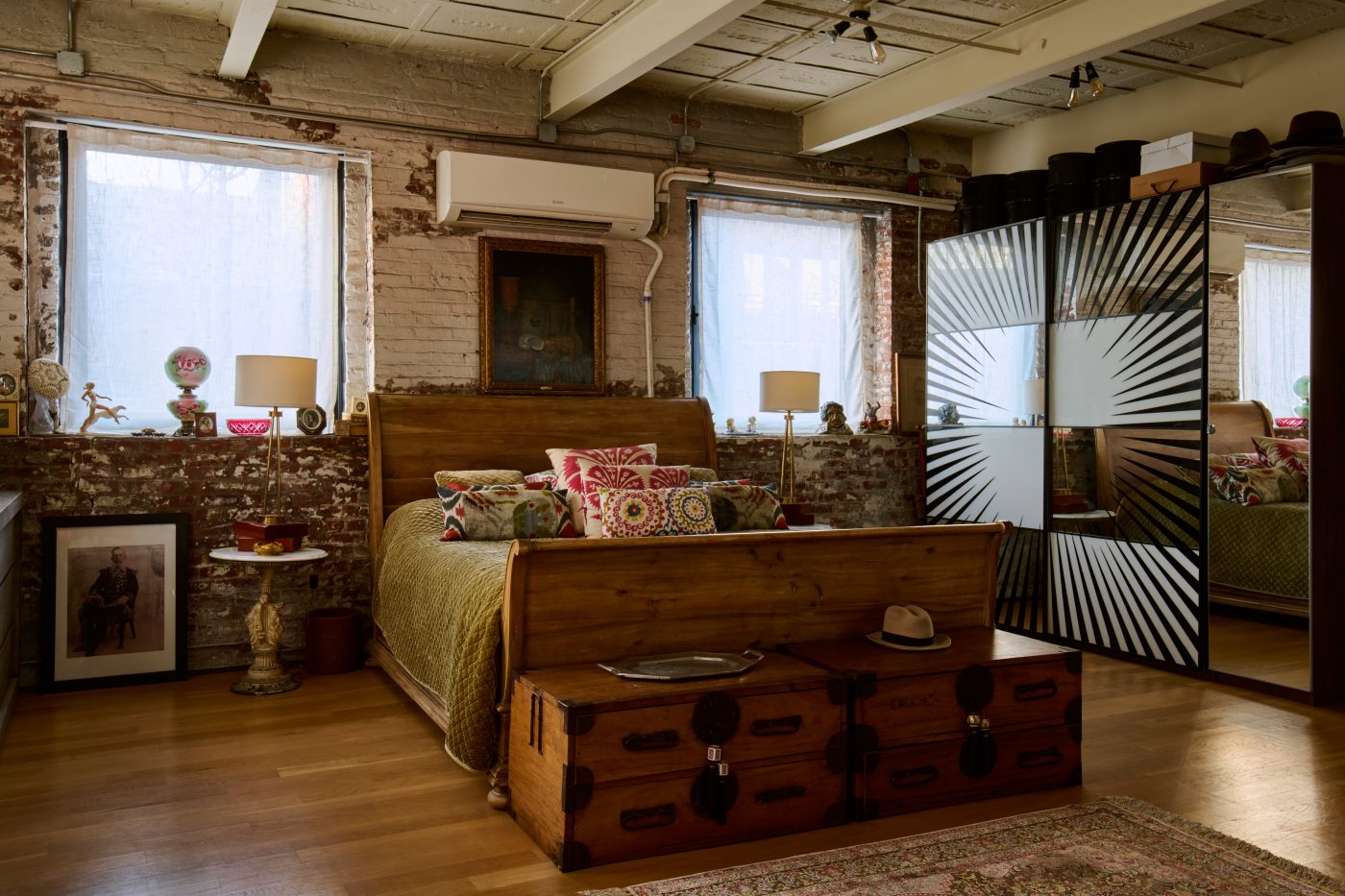
Whether the studio as it now stands can be saved or a new one ultimately rises on its remediated site, “we’re not moving,” says Smith, who remains committed to the ethos of the space. “The thing that this studio produced the best was a haven where everybody could come together, come up with ideas and then freely collaborate on those ideas.” That, Smith knows, will live on.


